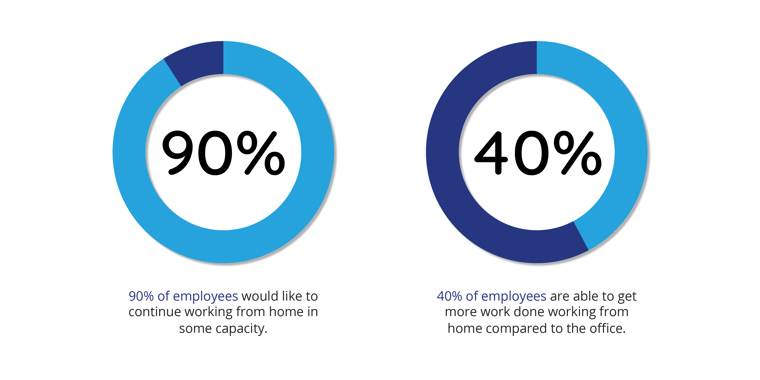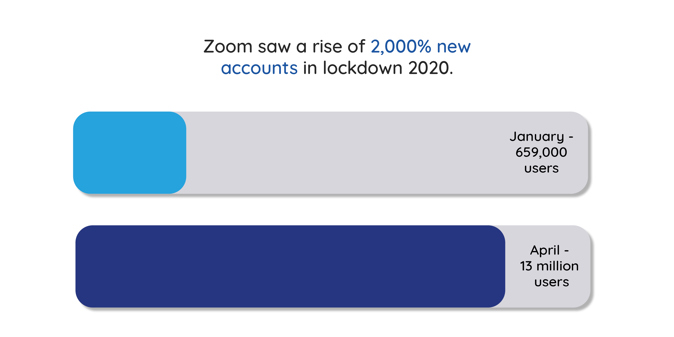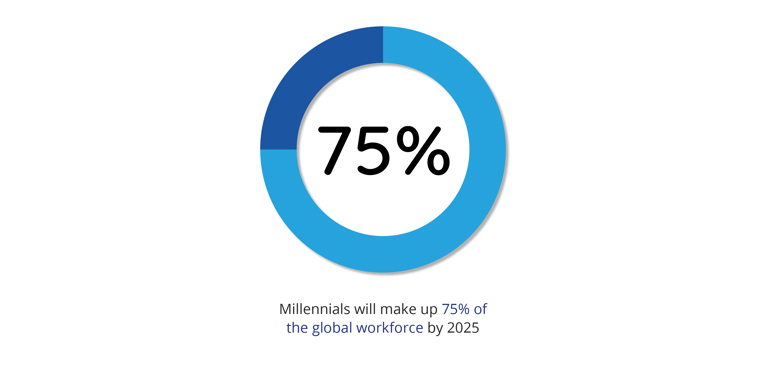Connect and engage your mobile workforce
Break down location barriers and connect mobile workers using their smartphones

While 2020 was an incredibly challenging period for the vast majority, there have been many positive developments in terms of how we work: with flexibility and overall employee wellbeing becoming the focus for most workplaces. COVID-19 certainly accelerated digital and virtual transformation, with organisations assessing new information and evidence to demonstrate jobs could be done from home. As a result, in 2021 it will be important to continue some of the key work-based improvements brought to light during the pandemic - from the use of technology to the rise of flexible working patterns
There has been a lot of focus on the increase in the number of employees working remotely (at least part of the time) going forward, but leaders need to be mindful of any working mode changes and how their employees may respond as a result of these changes. As stated in a report by Arcadia, Architects of Change, “The shift to new work modes in 2021 demands careful planning, engagement and leadership to realise the value of the opportunity.”
For many of us, remote working has become the norm, whether you’ve enjoyed the last 12 months or found them unbearable, it's clear that companies need to find a middle ground between office life and full time working from home, that's where flexible working comes in. By definition, flexible working gives employees a lot more freedom. Not only do they have the choice to work from home but they also have flexible start and finish times. This allows them to effectively fit their work around other responsibilities whilst prioritising a healthy work-life balance.
A report by academics at Cardiff and Southampton universities suggested the majority of people working from home are as productive, if not more. The survey suggested that almost 90% of people would like to continue working from home in some capacity and more than 40% said they were able to get more work done while working from home compared to 6 months earlier, when most were working outside of the home. Now that many have seen the tangible benefits of working from home, it seems likely that the flexibility of working is here to stay for 2021.

It's no secret that technology plays a large role in the way we work, but its role will likely become even more important in the future of work as it continues to evolve, especially as more workforces are going to continue working from home.
Video calling has become essential in today’s new work mode, with Zoom seeing the biggest growth. A Report has shown that it had 659,000 users in January, which had risen to 13 million by April - a rise of almost 2,000% new accounts. Furthermore, technologies such as Microsoft Teams, Slack and Google Drive continue to push the limits of streamlining communication to decrease friction that happens in the workplace. Companies are releasing that the old ways of how employees work are not as effective as they could be. The adoption of collaborative technology, will construct the future of work, encouraging more businesses to trial better ways of connecting internally and ultimately improving employee productivity and boosting connectivity.

More companies are also adopting intranets to transform their digital workplace. For most organisations, a company's intranet makes a fundamental change in employee collaboration and productivity. As time draws on, digital workplaces are only becoming more popular as businesses realise the benefits of going digital. Company intranets are central to the digital workplace. This is most obvious in today's current climate where there is more of a need to connect and engage your workforce and bring them together as one.
Millennials will make up 75% of the global workforce by 2025. From their comfort with technology to their need to collaborate, they possess unique characteristics that need to be embraced in the workplace, and they’re vastly changing the new working modes for 2021 and beyond.
 Millennials are used to being connected, collaborative and mobile. They are used to sharing with each other, communicating through social platforms, working from anywhere, having a voice and learning about what interests them. A study has shown that 90% of millennials want to grow their career in their current organisation and that they are willing to stay with companies that provide them with a chance to grow their skill set. Most businesses today are struggling to adapt to this changing workforce as baby boomers are starting to make their way out. This is certainly a big factor to consider when it comes to shaping the future of work. It’s even more pertinent for those organisations that are seeking to attract and retain top talent.
Millennials are used to being connected, collaborative and mobile. They are used to sharing with each other, communicating through social platforms, working from anywhere, having a voice and learning about what interests them. A study has shown that 90% of millennials want to grow their career in their current organisation and that they are willing to stay with companies that provide them with a chance to grow their skill set. Most businesses today are struggling to adapt to this changing workforce as baby boomers are starting to make their way out. This is certainly a big factor to consider when it comes to shaping the future of work. It’s even more pertinent for those organisations that are seeking to attract and retain top talent.

The idea of “connecting to work” is becoming more prevalent within organisations as they are starting to allow for more flexible environments. In fact, 71% of executives say that employee engagement is critical to their company's success. The notion of having to work 9-5 and commuting to an office is dying out. With the help of the internet employees now have access to everything they need to get the job done.
Mobility is not just about being able to work and get access to people and information from a mobile divide, it’s also about being a mobile worker, meaning employees can work from anywhere, anytime and on any device. Smart and progressive organizations around the world have already been making the necessary investments to adapt to these changes. Some have been doing so for several years already whereas many organizations are still trying to educate themselves about what these changes mean. Regardless of where you are in this spectrum, the future of work is something that you must plan and adapt to if you want your organisation to survive.
2021 is a year for new developments in the workplace, companies will need to harness the change and respond to disruptions and the working environment will become more focused on employee needs and adaptations. Organisations will need to build on the lessons of 2020: continue to promote wellbeing, use technology to the best possible advantage and connect workforces like never before.
Break down location barriers and connect mobile workers using their smartphones
Ensure your internal systems are protected as much as your external ones with these intranet security best practices.
Could an employee engagement survey impact business productivity? Spoiler: the answer is yes.